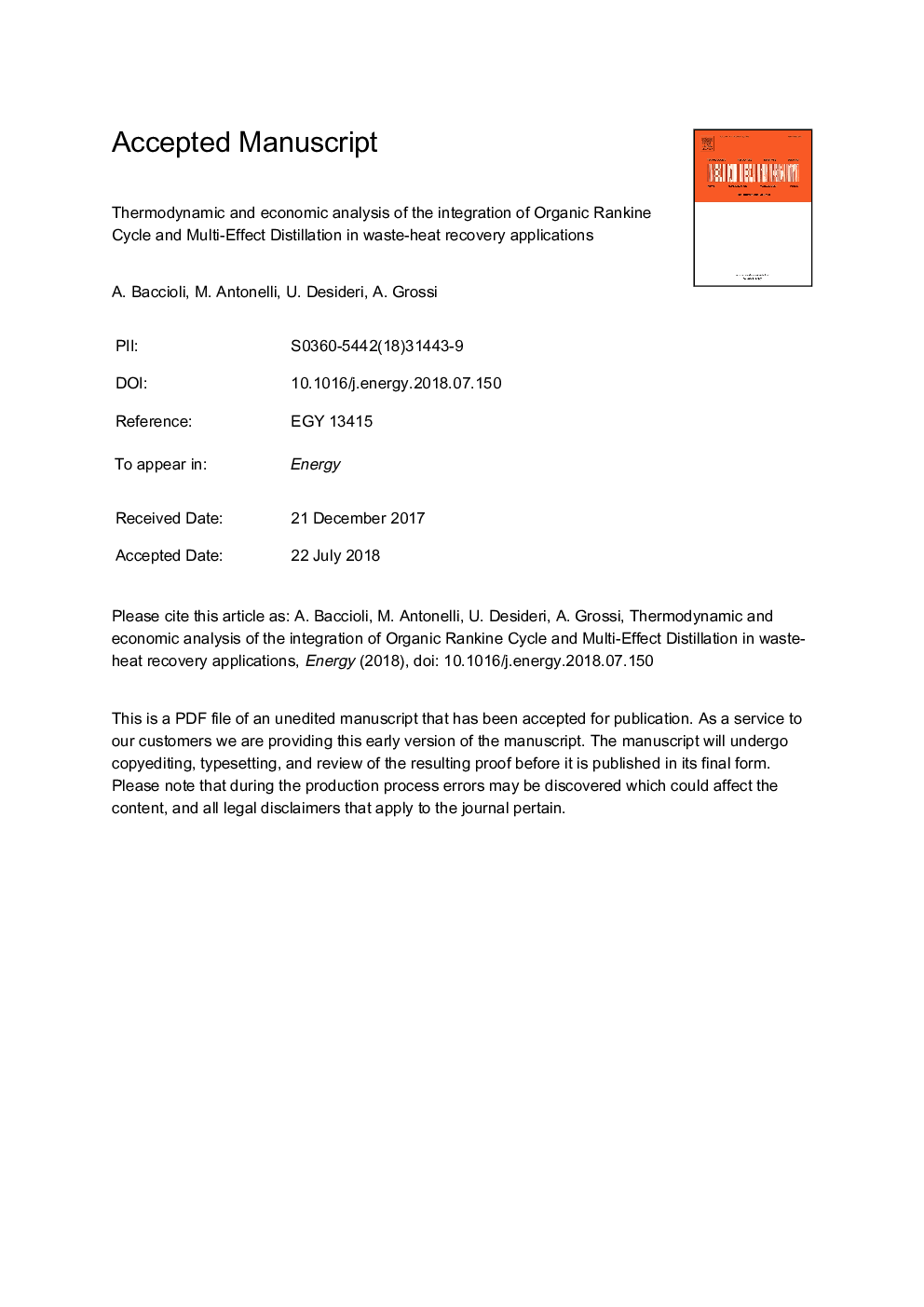| Article ID | Journal | Published Year | Pages | File Type |
|---|---|---|---|---|
| 8070924 | Energy | 2018 | 48 Pages |
Abstract
The coupling of a small-scale Multi-Effect Distillation system for seawater desalination with a waste heat recovery Organic Rankine Cycle was studied. Two configurations were analysed: a hybrid serial-cascade and a cascade configuration. The heat source was a generic waste heat flow at 200â¯Â°C. Four sizes were considered for the Multi-Effect Distillation, from 500 to 2000 m3/day. The second law efficiency decreased with the desalination unit size for the hybrid configuration, while presented a maximum value in size range 500-2000 m3/day for the cascade configuration. For the serial-hybrid configuration, the second law efficiency decreased from 43.1% to 15.5% when passing from a Multi-Effect Distillation size of 500 to 2000 m3/day, while for the cascade, the values had a reduced variation between 26.2 and 21.4%. The economic analysis showed that the hybrid configuration reduced to a serial configuration, which was largely more profitable. Moreover, when the size of the Multi-Effect Distillation was smaller, the investment could be convenient also for a water price of 0.8 $/m3, and the profitability index in some configurations reached 2.4 with this water price. In most of the cases, the coupling with an Organic Rankine Cycle improved the investment and reduced the payback time.
Keywords
Related Topics
Physical Sciences and Engineering
Energy
Energy (General)
Authors
A. Baccioli, M. Antonelli, U. Desideri, A. Grossi,
